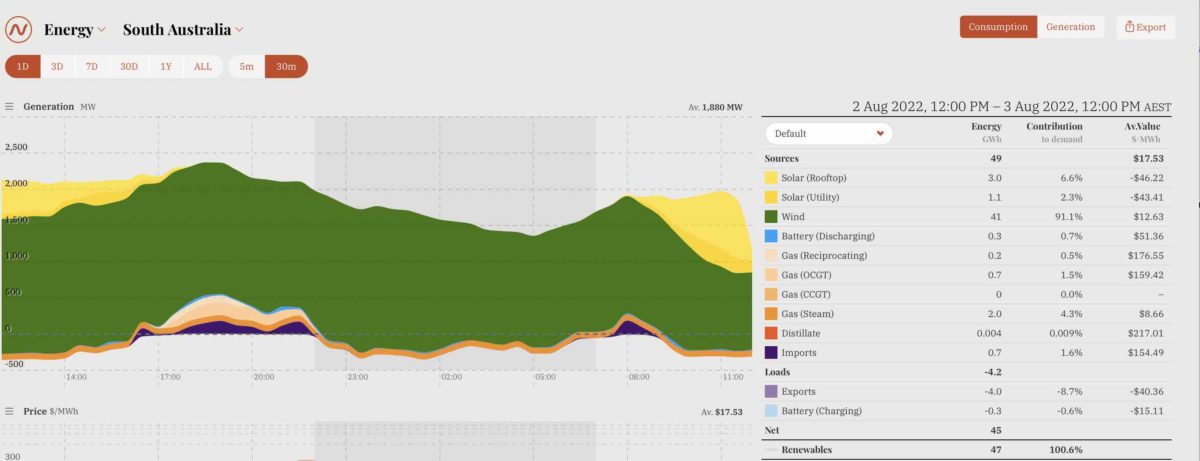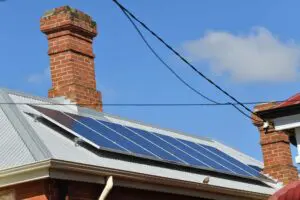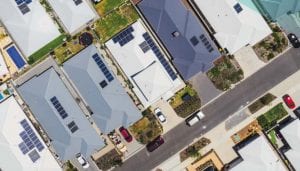Wind energy output records tumbled on Wednesday morning as a big storm swept across the southern states, and wholesale electricity prices tumbled into negative territory – a welcome relief from the fossil-fuelled price spikes of recent months.
Wind output hit a new “instant” peak of 7254MW in the Australia’s main grid, known as the National Electricity Market (the NEM), at 7.25am on Wednesday morning. That beat a previous peak set just two weeks ago by more than 140MW, according to data providers GPE Nemlog2.
It came just two days after the combined output of wind and solar also set a new “instant” record of 9239MW on Monday. See: Graph of the Day: Large scale wind and solar set record output on Australia’s main grid
In Victoria, a new peak of 3153MW set soon after 7am, also beat the previous record set just three days earlier, and kept the state’s prices in negative territory.
Update: The Victorian record was beaten again, rising to 3228MW later in the day at 21:45. In between, transmission problems caused record curtailment at 13:00 of 2,261MW of large scale wind and solar in the state.

In South Australia, its wind output tipped above 2GW again, but fell short of the recently established record of 2062MW. But its portfolio of wind generators provided 92 per cent of local demand over the 24 hours to noon Wednesday, and more than 100 per cent including solar.
Prices in South Australia only briefly jumped above zero in the evening and morning peaks, and averaged less than $20/MWh over the 24 hour period.
NSW and Queensland, however, did not enjoy low prices because they remain largely dependent on fossil fuels, and coal in particular.
As prices went negative overnight and in the early morning in the southern states, the prices in NSW and Queensland remained around $100/MWh for most of the night.
They spiked above $200/MWh in the morning peak, although Queensland abundant solar resources helped push its price down towards zero in the middle of the day.










